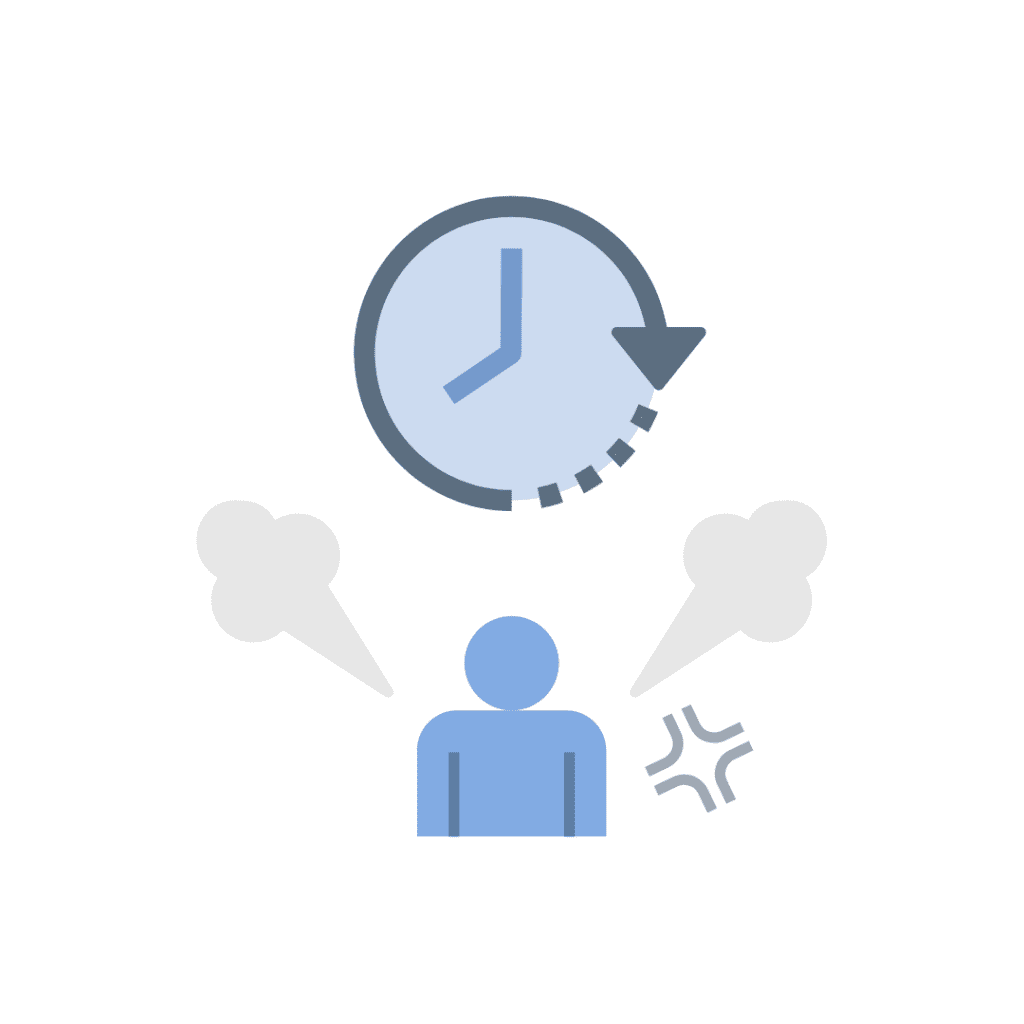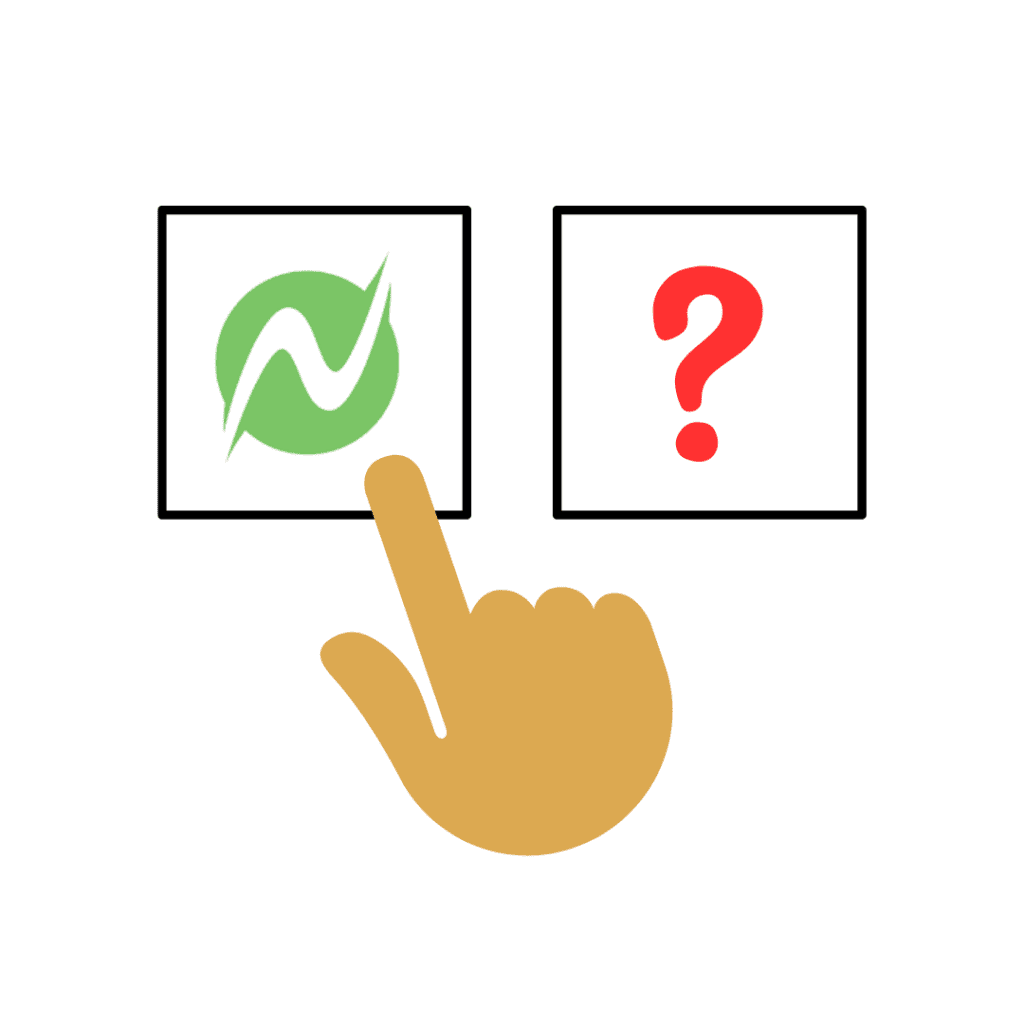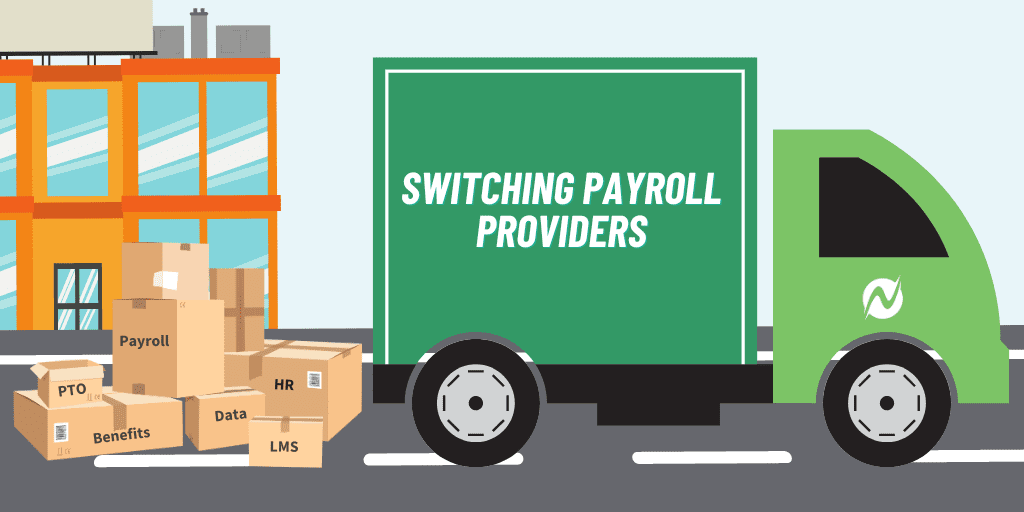Share
Every business needs payroll to function smoothly. Even when problems arise over and over again, some companies are reluctant to consider new technology providers. Switching payroll providers can sound intimidating at first, given the amount of research, paperwork, implementation, training, and more.
Outdated HR technology leads to preventable errors, never-ending delays, and unhappy employees. Payroll mistakes can drive away top talent and even expose the company to liability. Fortunately, the process of switching payroll providers is easier than you might expect.
I. The importance of improving your payroll process

You can’t afford to settle for “good enough” with payroll. Even minor mistakes and inefficiencies add up. Here are just a few reasons to keep improving:
Save money
Costs vary from one payroll provider to the next. If you haven’t shopped around recently, then your current payroll provider may charge more than the competition. You can’t always trust advice from animated reptiles, but those car insurance commercials make a good point: shopping around can save money.
Save time and effort
The right HR software improves efficiency across the board. Automation requires fewer human work hours and allows HR staff to focus on providing more people-centric HR services. Look for a provider that handles connected processes like scheduling and benefits administration, and you won’t need staff to manually transfer information.
Ensure accuracy
Human errors are expensive and preventable. Integrated software offers fewer opportunities for innocent mistakes and deliberate fraud. Payroll software should automatically calculate deductions for taxes, benefits, and wage garnishments.
Last year, Ernst & Young (EY) found that each payroll error costs $291 on average, and 20% of all payrolls contain errors.
Improve the employee experience
Workers depend on timely, accurate payroll to cover their household expenses and benefits. In 2023, 58% of Americans live paycheck to paycheck. Employees and their families suffer whenever checks bounce or payroll is delayed. Advanced HR software includes employee portals for self-service. Portals empower workers with access to check their hours and update personal information.
II. Signs that it’s time to switch payroll providers

Nobody questions the importance of payroll, but too many companies settle for mediocre service. Any of these six signs can mean that it’s time to shop around for an upgrade:
Errors and issues
Don’t ignore system malfunctions with a process as vital as payroll. A pattern of payroll errors will frustrate staff and might even expose the company to liability. On a practical level, payroll errors are expensive and preventable.
Available system features
The “bells and whistles” of payroll software might include automatic deductions and other integrations. Many employees prefer to use self-service features instead of relaying minor requests through HR personnel.
Fees, upcharges, and overall cost
Don’t let your company get tricked by the complicated billing of some payroll providers. After an initial setup cost, many providers have monthly fees and charges for additional services. Could you get all the same services for a lower cost elsewhere? How many work hours are you currently spending on HR tasks that could be automated with better software?
Software integrations
Many HR processes have different options for software, but you’re not getting the full benefit if staff need to manually transfer data between systems. Over the years, your company may have acquired a patchwork of software from different scheduling and benefits providers, but you can save time and money by putting everything under the same umbrella.
Limited growth and potential
As they grow, small and medium-sized businesses continue to need more from their providers. The payroll software that met your needs a couple years ago might not keep up with the complications of your growing workforce. Look for a payroll provider with easily scalable technology, not just meeting your current needs but ready to expand with your future growth.
Security concerns
Outdated technology fails to protect the sensitive information of workers and clients. HR data security should protect sensitive payroll details, even when they need to be relayed to third parties.
Today’s leading HR solutions provide efficient automation while boosting cyber security. At Netchex, we provide a variety of secure communication options, like Electronic Data Interchange (EDI) for benefits administration.
Bad relationship and service
Workers expect to be paid accurately and on-time. Your payroll needs to accurately compensate employees for their hours and overtime. Mistakes can have big consequences for employees, like miscalculations on child support payments and lapsed insurance coverage.
Your payroll provider should be responsive and accessible, quickly troubleshooting problems with your company. If your HR staff is having trouble communicating with your payroll service provider, then it’s probably time to shop around.
III. Payroll migration: Is it hard to switch payroll providers?

Nope! Any payroll provider “worth their salt” will make the migration process as simple as possible. (Historical note: Roman soldiers were paid a ‘salarium’ in salt, eventually leading to the English word “salary.”)
After comparing options, work with your chosen provider to collect the necessary resources. A hands on implementation team will provide you with an accurate timeline with easy to follow steps along the way.
IV. When is the best time to switch payroll providers?

It’s never a bad time to start the conversation about switching payroll providers. For making the actual transition, the timing can affect the number of complications and timeline.
If your current provider has major problems, then you may need to make the change ASAP. Employees will benefit from new services and accurate payroll whenever an upgrade happens.
New calendar or fiscal years
The easiest time to switch payroll providers is with the new year. Your old provider should have tax records for a complete year, and your new provider can start with a clean slate. Check your contracts with your old provider for cancellation policies.
Mid-year and quarterly switches
It is certainly possible to switch providers at the end of a fiscal quarter or even in the middle of the year. Business owners may have to hustle to submit federal tax return data, importing data from previous pay periods. Mid-year transitions require clear recordkeeping for the current year and additional paperwork, but improved payroll service can make a big difference for HR staff and employees.
Switching requires planning, but is almost always worth it. Make sure that your new provider is well prepared before “breaking up” with your current payroll provider. Your new provider can make sure you have everything you need.
V. How to choose a new payroll provider

When you’re ready for a better payroll provider, you still need to compare options. Which features are the most important for your company? Are you planning to automate new HR processes in the future? Getting your priorities in order will help you find the right match.
Identify pro’s and con’s of your current process
High costs and frequent mistakes are common reasons to change payroll providers, but what exactly are you looking to improve? Does your current provider do anything well? Think about the services that need to be continued when switching payroll providers, not just the opportunities for improvement. Will employees or HR staff miss any perks or features of the current system?
Determine necessary features
A wish list is fine, but don’t forget to prioritize your “must have” features. What types of support or functionality were missing with your old provider? How many employees and categories of workers may need to be managed through this system? What types of integrations and accessibility features matter to your company?
Reach out to chosen providers
When you have a list of likely providers, make sure to ask the right questions. What sizes of companies are currently served by this payroll provider? Is their software scalable to grow with the future needs of your company? What level of customer support do they offer? What’s their response time on technical support issues? Will employees have self-service access? How can they assist with migration tasks associated with switching payroll providers?
Consider referrals and online reviews
Talk to other professionals in your area, particularly anyone with a similar workforce or industry. When you’ve contacted payroll providers, they should be able to provide referrals and references for an honest assessment of their service.
Online reviews are helpful for the initial phase of comparing options. Anonymous reviews from the public aren’t always reliable. You can’t always trust a high rating on the Better Business Bureau, but several unresolved complaints should raise a red flag.
See the software in action
Schedule a demo presentation to see what each payroll provider has to offer. Every software platform has its unique perks and limitations. Software should be user friendly and easy to navigate for HR and payroll staff. How many steps are needed to make common adjustments?
Request proposal and determine specifications
Each business has unique needs. When you’ve narrowed down a list of promising providers, it’s time to request a proposal. You can provide an overview of your current payroll specifications and your expected software requirements. Which of their available services will you need? You can request a la carte pricing for optional, add-on services.
VI. Breaking up with your current provider

When switching payroll providers, you don’t want to cause unnecessary offense with your current provider, even if you’re disappointed with past service. You also don’t want to lie or be unnecessarily vague. If you say that you no longer require their payroll service, then you might accidentally give the impression that your company is going out of business, leading them to file the inaccurate paperwork on your behalf. Use clear communication to keep things professional.
Review your current contract’s details & provide timely notice
How much advance notice are you required to provide? If possible, you should make the arrangements for your new provider before notifying the current provider. A payroll provider that’s already struggling may not provide stellar service through the end of their contract. Most companies will be helpful and cooperative through the rest of your contracted period, but you don’t want to gamble with payroll.
Choose new provider
After reviewing the demo presentations and answers to your follow-up questions, which provider seems best for your company? With a major decision like payroll, be sure to include all stakeholders, including the CFO.
If they’re not already involved, use this opportunity to build a better relationship between HR and the CEO. When you explain the extra features available, the C-Suite may be open to additional spending on HR software.
Appoint a transition lead
Someone will need to keep the selection and transition process on schedule. Don’t forget to inform stakeholders and the current provider when appropriate. With all the options and considerations, it’s easy to lose track of the big picture. Collect all the paperwork that might be needed.
Payroll Migration Checklist:
☐ Shop around for the right payroll software
☐ Request proposals from the top payroll vendors
☐ Get buy-in from your stakeholders with a business report
☐ Review the deadline to provide notice for your current contract
☐ Give notice and request paperwork from your current provider (journals, pay stubs, etc)
☐ Finalize terms (and sign contract) with your new payroll provider
☐ Communicate expectations and confirm tax filing arrangements with both payroll companies
☐ Update employees (and other stakeholders) and provide and needed training
Payroll Migration Paperwork:
☐ Employee SSNs and contact info
☐ Direct deposit details for employees
☐ YTD and quarterly pay stubs
☐ Employee W2s and W9s
☐ List of benefit deductions
☐ Garnishment orders
☐ Company tax ID and bank account
☐ Payroll schedule and past tax returns
Request information from current provider
Depending on your region and provider, you may need to request Record of Employment (ROE) documents to show the breakdown of insurable earnings. Payroll register reports include wages and deductions for the year-to-date, essential for transitioning to a new provider during the year.
Tax documents will need to be provided to your new provider, even if you migrate with the new year. You should have your own copies of employee and contractor tax documents like 1099s, but your old payroll provider should also be communicative and accommodating, at least until the end of your contract.
Notify employees
Don’t forget to keep employees in the loop about switching payroll providers. You might even include employee representatives as stakeholders when comparing demos of different software. Workers will have their own preferences about employee portals, remote access, and self-service features. Provide updates when the current provider has been notified and when the new provider is going “live.”
Set up your account
Every company’s workforce is different, and your payroll software should allow customization. Your provider should help adapt their system to your needs, whichever products and add-ons you choose to include.
When all the data is migrated, you’ll want to conduct regular payroll audits to ensure accuracy. Make sure everyone is fully trained and ready when you run your first payroll on the new system.
VII. Avoiding common transition problems when switching payroll providers

Switching payroll solutions may be the answer to your HR prayers. Better efficiency. Advanced reporting. Streamlined processes. More collaboration. Even with help from your new provider, there can still be hiccups during transition. Be proactive to reduce the number of preventable mistakes.
However, as you make the switch, you’ll want to avoid these common pitfalls to ensure a smooth transition and benefit from maximum ROI.
Accounting and data transfer errors
Your new, integrated software may automate future transfers, but migration itself still requires data transfers. Audit your data and spot check figures in the new payroll system for accuracy. Ask your payroll provider about testing options before the actual payroll date.
Keeping payday on schedule & accurate
Minor disruptions can snowball into catastrophic delays on your first payroll with a new system. Get ahead of bottlenecks with detailed preparation. Respond decisively to resolve last-minute problems as they arise.
Payroll needs to be correct, not just fast and efficient. Spot check all inputs from employee tax information to overtime tracking. Errors like misclassifying employees will cause additional problems from one pay period to the next.
Conducting Your Due Diligence
The big name payroll systems often appear shinier and more appealing than they really are. Dig a little deeper and conduct ample research before you sign on the dotted line. Online reviews and customer testimonials may tell a very different story than the company is pitching.
A new startup, platform or technology might not be backed by the expertise you need to answer all your questions. Where’s the insight to overcome complex business challenges? The experienced professionals with acumen to direct success?
In today’s world of extreme transparency, there’s no shortage of ways to vet a service provider. At Netchex, we welcome the opportunity to check references, discuss client partnerships, and explore our long-standing commitment to excellence in the HR industry.
Getting Sucked in By All or Nothing
You’ve heard the colloquial phrase–if we ain’t got it, you don’t need it. But, just because it’s available doesn’t mean it’s needed (at least not right away). You want a better way to run payroll. So why are you also paying for extra things you don’t want?
All too often companies get hustled by the notion that more is better. But what you really want to do is invest in an HR solution that will grow with your business. And those are two very different ideas. What you shouldn’t be doing is paying for supplemental services while they’re not being used.
At Netchex, we offer a full suite of authentic, in-demand HCM management solutions. Which simply means that from start-ups to established businesses, our hire to retire services are tailored to meet your unique real-time requirements. Sure, you can have it all… or, let us help you build the right human resources solution with both packages and à-la-carte services designed to complement existing processes.
We provide what you need, when you need it. Our HCM technology integrates seamlessly with other software systems so you can pick and choose and only pay for what you need.
Instilling Fear Rather than Confidence
Most companies are met with a lukewarm response from employees when hearing their familiar (yet, ineffective) tools and processes are changing. The reluctance to learn new platforms, acclimating to new HR systems, and training subsequent staff can be a daunting thought that can spread throughout a company. And, communication is often the culprit.
We encourage companies to accentuate the positive. Start by relaying the benefits of the solution and how it will make their lives easier:
- Swift, seamless transition
- Streamlining of processes
- Reduced workload which comes with automating tasks
Skipping the Getting to Know You
You wouldn’t start a new employee off without making the introductions first. So, why would you implement a new payroll system without doing the same? Many companies forget that an HR solution is typically used by the entire company, yet often launched without a proper introduction–resulting in confusion and avoidance.
The most effective way to prepare your team for a new payroll system is to begin acclimating prior to implementation. Whether it’s a few days or a few weeks before rolling it out, we suggest gathering your team for a brief, informal presentation to introduce them to their newest partner in HR.
Give your employees the opportunity to play around in the system, familiarize themselves with tools and the interface, and view online tutorials on their own time. Day one shouldn’t be an ice-breaker, it should be a big motivator.
Discover why NOW is the right time to switch to Netchex
Switching payroll or HCM solutions shouldn’t be a difficult process. At Netchex, we make it easy for you to transition your payroll, HR, benefits, time & attendance, and compliance tasks to our solutions. Our friendly staff of experts are always on hand when you need us. Learn how upgrading from manual processes can give you a major competitive edge in your industry.
This article is part of our comprehensive payroll management series.
